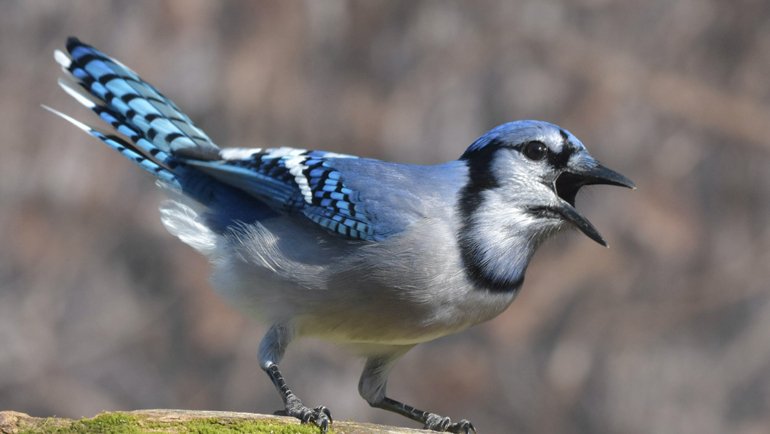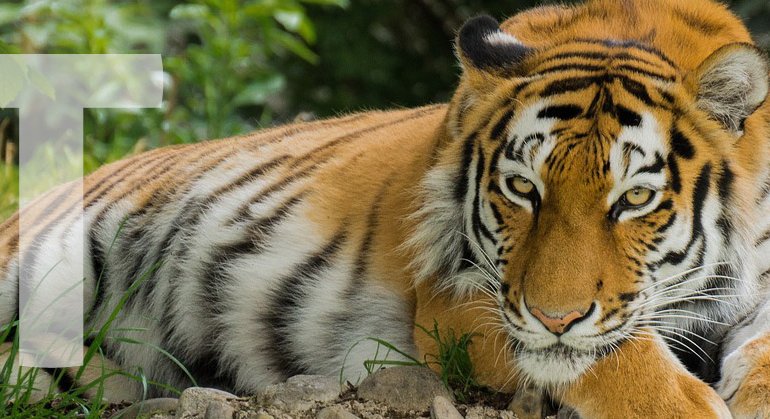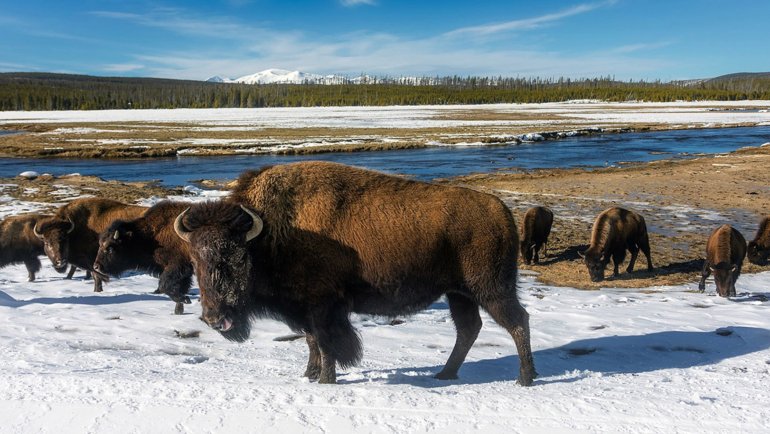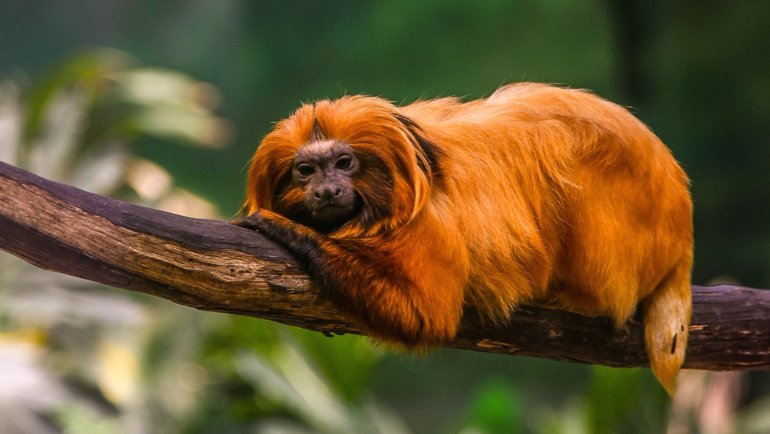Grey may not be the most exciting color we can think of, but there is definitely no shortage of really fascinating and iconic grey animals. From the icy peaks of the Himalayas to the dense rainforests of Africa, we’ll be introducing you to twelve extraordinary creatures that sport varying shades of grey.
Let’s explore the natural world in grayscale and discover how these creatures contribute to the vibrant spectrum of biodiversity on our colorful planet.
12 Grey Animals: Overview
- Grey Wolf
- Koala
- Grey Whale
- White Rhinoceros
- African Grey Parrot
- African Bush Elephant
- Grey Fox
- Gray Tree frog
- Canada Lynx
- Common Seal
- Snow Leopard
- Grey Go-Away Bird
Grey Animals: Pictures and Facts
Grey Wolf
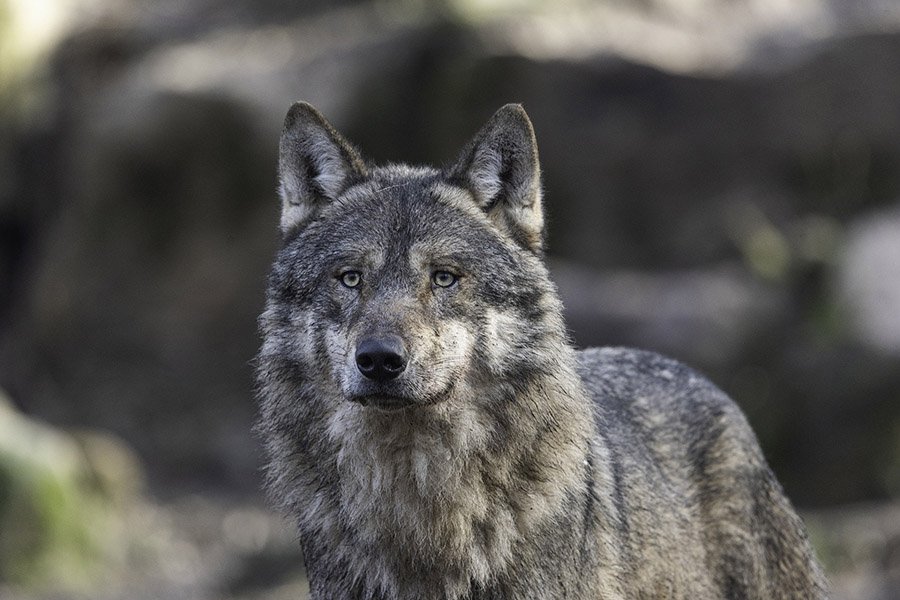
- Scientific name: Canis lupus
- Type of animal: Mammal
- Where found: North America, Eurasia
First on our list is the Grey Wolf, a creature that has long captivated the human imagination. Roaming the wild terrains of North America, Europe, and Asia, the Grey Wolf sports a dense fur coat ranging from pure white to a mix of browns and greys, and even to a deep, solid black. Their fur coloration often reflects their surrounding environment, aiding in camouflage.
Despite their name, Grey Wolves are not always grey. The term ‘grey wolf’ is more about the species, Canis lupus, rather than their color. Wolves are social creatures, living in packs that are complex and hierarchical. Each wolf has a particular role, from the alpha pair leading the pack, to the juveniles and pups lower in the ranks.
The relationship between humans and wolves is complex, marked by fear, respect, and admiration. Wolves are known for their communication skills, utilizing a combination of howls, body language, and scent marking to convey messages within the pack.
Koala

- Scientific name: Phascolarctos cinereus
- Type of animal: Mammal
- Where found: Australia
Next, we journey to the eucalyptus forests of Australia, home to the adorable Koala. With their round, grey bodies, white tufts in their ears, and a spoon-shaped nose, koalas are often mistaken for bears, but they are actually marsupials, more closely related to kangaroos and wombats.
The koala’s grey fur is perfectly adapted to their lifestyle, providing excellent camouflage against the bark of eucalyptus trees. They lead a slow-paced life, sleeping up to 18-20 hours a day, and conserving energy due to their nutrient-poor diet of eucalyptus leaves.
Despite their sleepy demeanor, koalas face many threats, including habitat destruction, climate change, and disease. These challenges have led to a significant decline in their populations, making the efforts to protect their habitats all the more crucial. The Koala serves as a symbol of Australia’s unique wildlife and a reminder of the urgent need for conservation in an ever-changing world.
Grey Whale

- Scientific name: Eschrichtius robustus
- Type of animal: Mammal
- Where found: Northwestern and northeastern Pacific Ocean
Diving into the coastal waters of the North Pacific, we encounter the majestic Grey Whale. These gentle giants, reaching up to 49 feet in length, are a mottled grey due to a combination of dark skin overlaid with patches of lighter, barnacle-covered skin, and often lice. The patterns of barnacles and lice are unique to each whale, like a fingerprint.
Grey whales undertake one of the longest migrations of any mammal, traveling up to 12,000 miles round trip between their feeding grounds in the Arctic and breeding lagoons in Baja California, Mexico. They are known as “bottom feeders” because they feed by turning on their sides and scooping up sediments from the seafloor, filtering out tiny crustaceans and other food through their baleen.
Once hunted to near extinction, grey whales have made a remarkable recovery thanks to international protection.
White Rhinoceros
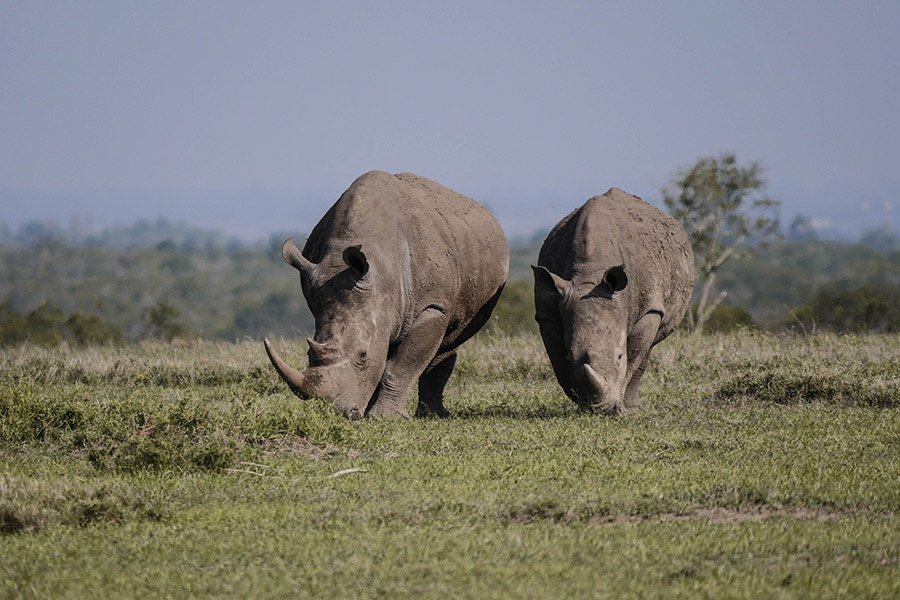
- Scientific name: Ceratotherium simum
- Type of animal: Mammal
- Where found: Africa
We now tread to the open grasslands of Africa, where the White Rhinoceros, the second-largest land mammal, makes its home. Despite its name, the White Rhino is not white but rather a light grey, perfectly blending with the African savanna. The ‘white’ in their name is a mistranslation of the Dutch word ‘wijde,’ which means ‘wide’ and refers to the animal’s wide mouth.
White Rhinos are divided into two subspecies, the Southern and Northern White Rhino. Sadly, the Northern White Rhino is on the brink of extinction, with only two females left as of my knowledge cutoff in September 2021. The Southern White Rhino, however, is considered a conservation success story, with numbers rebounding from fewer than a hundred in the late 19th century to around 20,000 today thanks to rigorous conservation efforts.
White Rhinos are known for their two horns and their broad, square lips, which are designed for grazing on grass.
African Grey Parrot
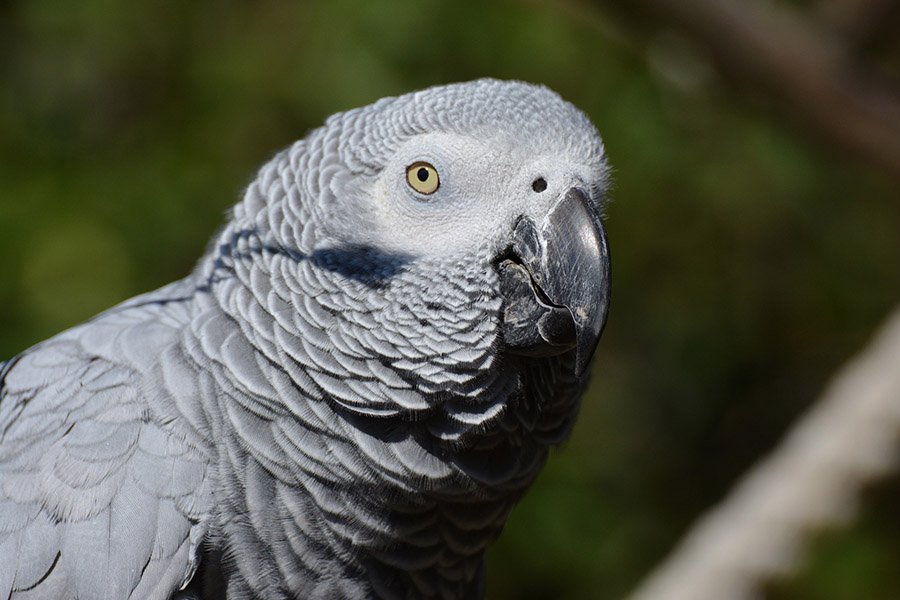
- Scientific name: Psittacus erithacus
- Type of animal: Bird
- Where found: Equatorial Africa
Next, let’s take a flight to the rainforests of West and Central Africa to meet the African Grey Parrot. Dressed in a sleek coat of silvery-grey feathers and sporting a bright red tail, this bird is regarded as one of the most intelligent bird species.
African Grey Parrots are renowned for their extraordinary ability to mimic human speech, making them popular pets. In the wild, these social birds live in flocks and feed on a diet of fruits, nuts, and seeds. They play a crucial role in seed dispersal, aiding in forest regeneration.
Unfortunately, their popularity as pets, combined with habitat loss, has led to a decline in their wild populations. Today, international trade in African Grey Parrots is regulated, and efforts are ongoing to protect their habitats and ensure the survival of these remarkable birds.
African Bush Elephant

- Scientific name: Loxodonta africana
- Type of animal: Mammal
- Where found: Africa
Our journey continues in Africa with the largest land mammal on Earth, the African Bush Elephant. These majestic creatures have distinct greyish-brown skin, a coloration that matches the savannas and woodlands they inhabit. One of the two African elephant species, the Bush Elephant is larger and has bigger tusks than its cousin, the African Forest Elephant.
African Bush Elephants are known for their large, fan-like ears that help dissipate heat, and their long, curved tusks used for foraging, digging for water, and as a weapon in fights. These herbivores have a varied diet, feeding on grass, fruit, bark, and leaves.
Elephants are a keystone species, playing a crucial role in shaping their environment. They also contribute to biodiversity by dispersing seeds through their droppings.
Despite their ecological importance, elephants face numerous threats, primarily from habitat loss and ivory poaching. Their survival is crucial for the ecosystems they inhabit and symbolizes the broader challenges of wildlife conservation in Africa.
Grey Fox

- Scientific name: Urocyon cinereoargenteus
- Type of animal: Mammal
- Where found: North and Central America
We now trek to the woodlands of North America to meet the Grey Fox. Cloaked in grizzled grey fur, with patches of cinnamon, white and black, this fox is well-adapted to blend into a variety of habitats. Notably, the Grey Fox is one of the only canids with the ability to climb trees, aided by their strong, hooked claws.
Grey Foxes are omnivorous, with a diet that includes small mammals, birds, insects, and a variety of fruits. They are solitary animals, spending much of their time alone, except during the mating season.
While often overshadowed by their more famous relative, the Red Fox, Grey Foxes are fascinating in their own right. They play an important role in controlling pest populations, and their adaptability to both wilderness and suburban environments showcases the resilience of nature.
Gray Tree frog
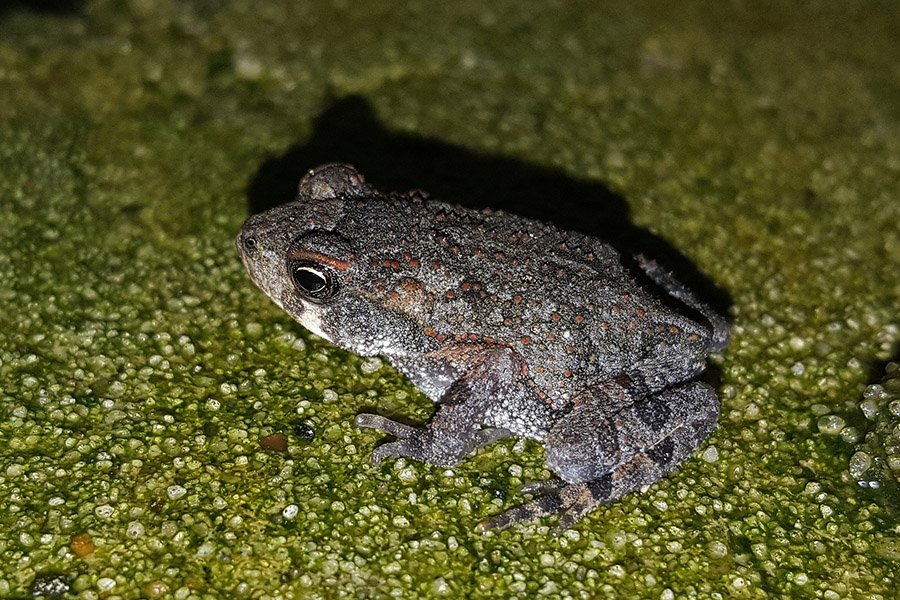
- Scientific name: Dryophytes versicolor
- Type of animal: Amphibian
- Where found: North America
Next, we find ourselves in the wetlands, forests, and backyards of Eastern North America, home to the Gray Tree Frog. As their name suggests, these frogs have the ability to change their color to various shades of gray to camouflage perfectly with tree bark and leaves.
Despite their small size, Gray Tree Frogs are known for their loud, musical call, which can be heard during warm, rainy nights in their breeding season. These versatile amphibians have adhesive pads on their toes, allowing them to climb a wide variety of surfaces.
Gray Tree Frogs are an essential part of their ecosystem, helping to control insect populations. Their permeable skin also makes them indicators of environmental health, as they are highly sensitive to pollutants and changes in climate.
Canada Lynx

- Scientific name: Lynx canadensis
- Type of animal: Mammal
- Where found: North America
Our journey takes us north to the dense boreal forests of Canada, where the elusive Canada Lynx resides. With a coat of thick, silvery-gray fur, tufted ears, and large, padded paws for walking on snow, this medium-sized cat is perfectly adapted for life in the cold.
Canada Lynxes are solitary animals with territories that can range up to 100 square miles. Their diet primarily consists of snowshoe hares, making the lynx’s population cycles closely linked to the population cycles of these hares.
Despite their secretive nature and the challenges of their icy habitats, Canada Lynxes face threats from habitat loss due to logging and climate change. Their survival is crucial for maintaining the delicate balance of food webs in the northern forests they inhabit.
Common Seal

- Scientific name: Phoca vitulina
- Type of animal: Mammal
- Where found: Arctic and temperate coasts of the Northern Hemisphere
Diving back into the ocean, we meet the Common Seal, also known as the Harbor Seal. With its round, grey-spotted body and puppy-like face, this marine mammal is a beloved sight along temperate and Arctic marine coastlines of the Northern Hemisphere.
Common Seals possess a varied diet that includes fish, squid, and crustaceans. Their large, round eyes give them excellent vision both underwater and on land, while their whiskers, or vibrissae, help them detect prey in murky waters.
Despite their seeming clumsiness on land, Common Seals are incredibly agile in the water. Their streamlined bodies and powerful flippers allow them to maneuver effortlessly while hunting or evading predators. While generally quiet, seals can produce a variety of vocalizations, especially during the breeding season.
Snow Leopard
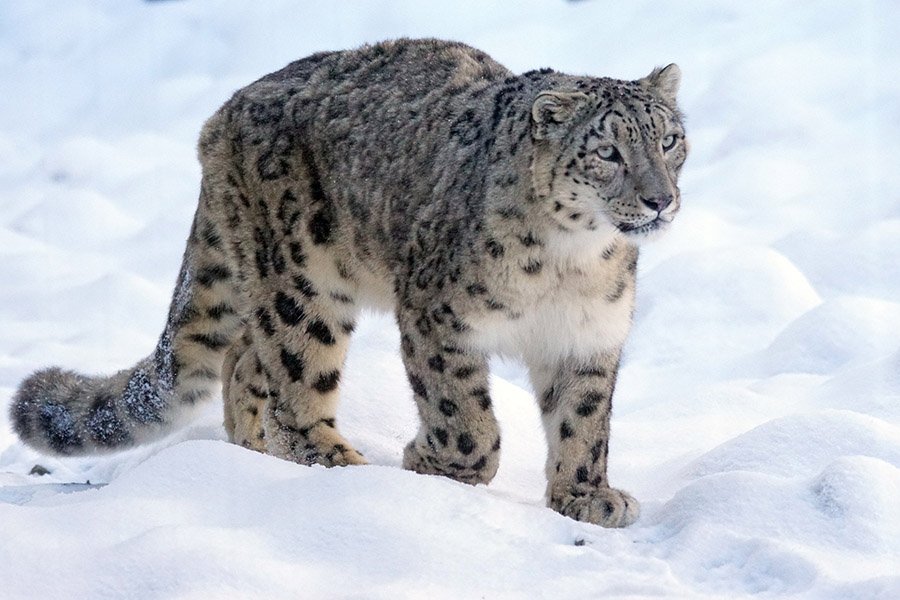
- Scientific name: Panthera uncia
- Type of animal: Mammal
- Where found: Central Asia
Our journey takes us to the cold, rugged mountain ranges of Central and South Asia, home to the elusive Snow Leopard. Dressed in a beautiful coat of thick, warm fur with grey and black rosettes on a lighter background, this big cat is perfectly camouflaged against rocky terrain and snow.
Snow Leopards are known for their powerful build, long, bushy tails, and incredible agility in steep, rugged terrains. They are solitary animals, with males and females coming together only during the mating season.
Snow Leopards play a crucial role as apex predators, maintaining the balance of their high-altitude ecosystems. Despite their importance, they face numerous threats including poaching, retaliatory killings, and habitat loss due to climate change. The Snow Leopard is a symbol of the mountains’ serene beauty and the urgent need for effective conservation measures.
Grey Go-Away Bird

- Scientific name: Corythaixoides concolor
- Type of animal: Bird
- Where found: Africa
Finally, we flit back to the savannas and woodlands of Southern Africa to meet the Grey Go-Away Bird. Named after its distinct ‘go-away’ call, this bird, with its smoky grey plumage, crest, and strikingly pink gape, is a common sight in its native range.
Grey Go-Away Birds are largely frugivorous, feeding on fruits, flowers, leaves, and occasionally on small insects and snails. They are known for their loud, nasal ‘go-wayyyy’ calls, especially when alarmed, which can alert other wildlife to potential danger.
These birds are gregarious and usually found in small groups or pairs. They are monogamous, with pairs bonding for life. The Grey Go-Away Bird is a reminder of the role each creature plays in their habitat, from spreading seeds to acting as sentinels, and the delicate balance of ecosystems.
